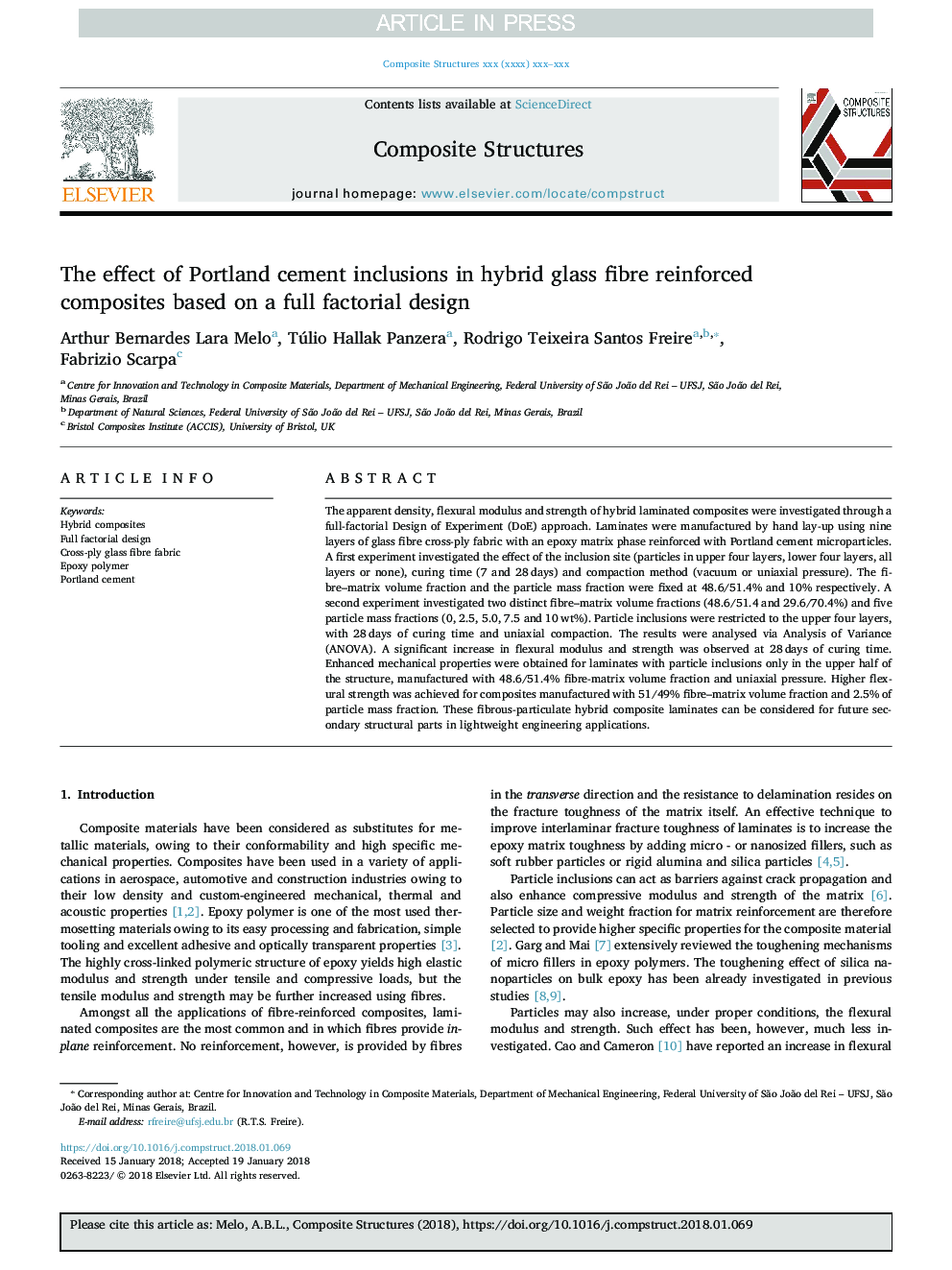| Article ID | Journal | Published Year | Pages | File Type |
|---|---|---|---|---|
| 8959917 | Composite Structures | 2018 | 8 Pages |
Abstract
The apparent density, flexural modulus and strength of hybrid laminated composites were investigated through a full-factorial Design of Experiment (DoE) approach. Laminates were manufactured by hand lay-up using nine layers of glass fibre cross-ply fabric with an epoxy matrix phase reinforced with Portland cement microparticles. A first experiment investigated the effect of the inclusion site (particles in upper four layers, lower four layers, all layers or none), curing time (7 and 28â¯days) and compaction method (vacuum or uniaxial pressure). The fibre-matrix volume fraction and the particle mass fraction were fixed at 48.6/51.4% and 10% respectively. A second experiment investigated two distinct fibre-matrix volume fractions (48.6/51.4 and 29.6/70.4%) and five particle mass fractions (0, 2.5, 5.0, 7.5 and 10â¯wt%). Particle inclusions were restricted to the upper four layers, with 28â¯days of curing time and uniaxial compaction. The results were analysed via Analysis of Variance (ANOVA). A significant increase in flexural modulus and strength was observed at 28â¯days of curing time. Enhanced mechanical properties were obtained for laminates with particle inclusions only in the upper half of the structure, manufactured with 48.6/51.4% fibre-matrix volume fraction and uniaxial pressure. Higher flexural strength was achieved for composites manufactured with 51/49% fibre-matrix volume fraction and 2.5% of particle mass fraction. These fibrous-particulate hybrid composite laminates can be considered for future secondary structural parts in lightweight engineering applications.
Related Topics
Physical Sciences and Engineering
Engineering
Civil and Structural Engineering
Authors
Arthur Bernardes Lara Melo, Túlio Hallak Panzera, Rodrigo Teixeira Santos Freire, Fabrizio Scarpa,
